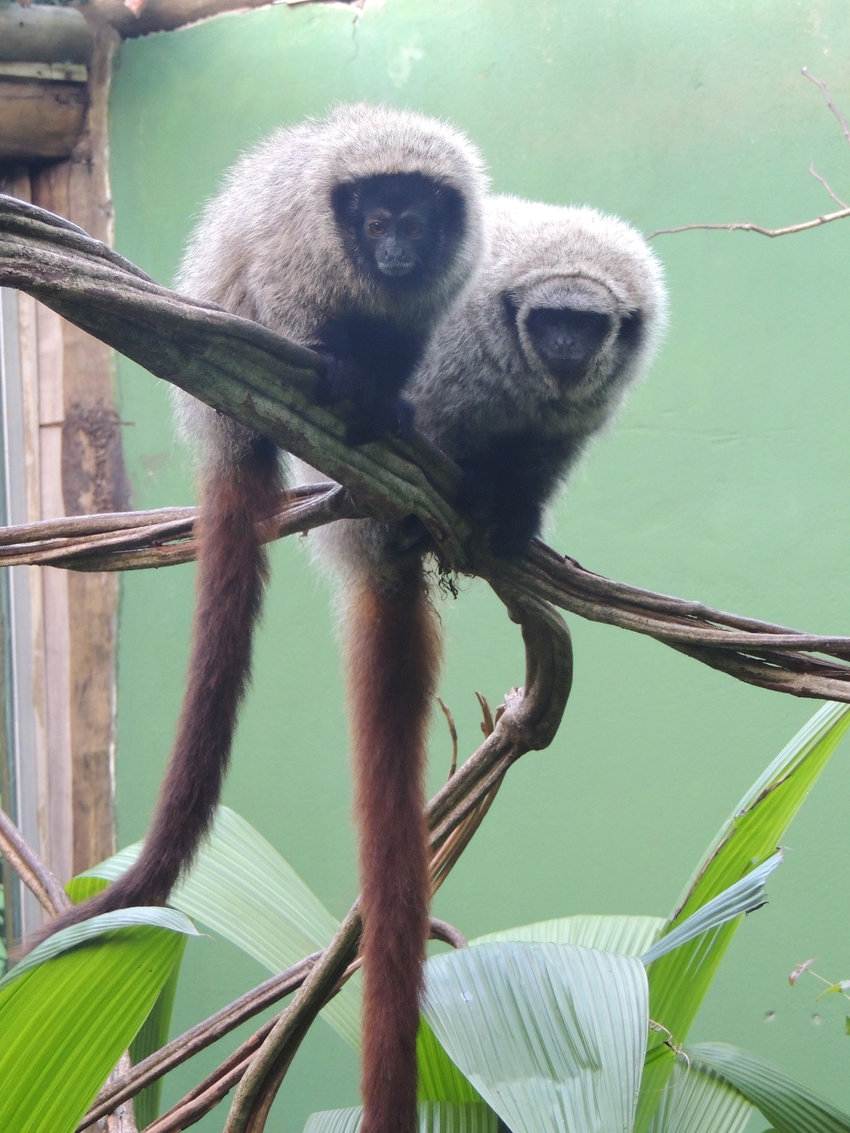Brazilian Atlantic Dry Forests
The ecoregion’s land area is provided in units of 1,000 hectares. The conservation target is the Global Safety Net (GSN1) area for the given ecoregion. The protection level indicates the percentage of the GSN goal that is currently protected on a scale of 0-10. N/A means data is not available at this time.
Bioregion: Brazilian Atlantic Dry Forests (NT15)
Realm: Southern America
Ecoregion Size (1000 ha):
11,536
Ecoregion ID:
524
Conservation Target:
19%
Protection Level:
4
States: Brazil
The critically endangered Barbara Brown’s titi is a small primate endemic to the Brazilian Atlantic Dry Forests. Only several small fragmented populations remain with only about 260 individuals in the wild. These agile climbers and jumpers collect fruit from the outermost branches of trees up in the canopy before parrots and other birds get to them. The dry forest habitat offers some unique challenges to arboreal primates. For example, the trees are shorter and interspersed with shrublands and grasslands. In addition, during the dry season the trees lose their leaves, exposing these primates to predators like hawks and forcing them to forage on the ground.

The flagship species of the Brazilian Atlantic Dry Forests ecoregion is Babara Brown's titi. Image credit: Courtesy of Animal Fandom
This forest-dominated ecoregion is surrounded by open vegetation of Caatinga in the north and east and Cerrado in the west and south. It is partially isolated from the central part of the Atlantic forest ecoregions. Located mostly along the pediplained depression on River São Francisco, Atlantic Dry Forests cover an extensive area on eutrophic soils derived from Bambuí limestone rocks. The climate is mostly tropical with five dry months a year. The annual rainfall ranges from 850–1,000 mm. The relief is flat with some relict hills dispersed in the landscape.
Tropical dry forests, deciduous or semi-deciduous, are the dominant vegetation type. Small patches of Cerrado and Caatinga are also found where soils and geomorphology are adequate. Dry forests are fairly dense, up to 25 to 30 m high and characterized by tree species such as Cavanillesia arborea, Brazilian cedarwood, Araracanga, and Tabebuia sp. Cavanillesia arborea, with its huge, bottle-shaped trunk of a maximum diameter of over 1.5 m, can reach over 27 m in height. There are also several calcareous caves associated with dry forests that harbor a unique and specialized biota. A combination of geomorphological, geological, climatic, hydrological, and vegetation features helps to delineate this ecoregion.
Although the biodiversity of Brazilian Atlantic Dry Forests is still poorly known, the presence of bird species restricted to this ecoregion gives rise to predictions that endemic species of other biological groups will be found. The cave biota is believed to be very distinct, with spectacular adaptations and life history strategies. At least 20 species of birds are migratory, moving north during the dry season and returning to breed during the wet season. Nonetheless, little is known about this migratory system.
Most of the endemic and semi-endemic species of vertebrates found in Atlantic Dry Forests are listed as threatened or near-threatened by IUCN and the Brazilian government. Within Atlantic dry forests there are five key areas (Parnaguá and Corrente; Coribe; Palmas de Monte Alto; Itacarambi and Mocambinho; and Brejo do Amparo) that are important for conservation of six globally threatened birds: hyacinth macaw, vinaceous-breasted amazon, golden-capped parakeet, moustached woodcreeper, great xenops, and minas gerais tyrannulet.
Approximately 70% of the native forest has been destroyed. Because these forests grow on relatively rich soils, they are prime candidates to be cleared for both irrigated and dry-field agriculture. Furthermore, the high biomass of these forests makes them important sources of fuel for Brazil's steel and pig iron industries, which run entirely on charcoal. The most diverse dry forests on flat terrain and rich soil have been completely removed. Currently, the few large remnants of dry forest are found only on the slopes of the plateaus bordering the São Francisco depression. The protected Peruaçu and Serra das Confusões areas are located on the extremes of the ecoregion, whereas its core region between Manga (Minas Gerais) and Ibotirama (Bahia) remains unprotected.
The priority conservation actions for the next decade will be to: 1) expand protected areas, particularly in the core of the ecoregion, in order to recover habitat and prevent further deforestation; 2) limit land conversion for agriculture; and 3) restore the dry forests in their original habitats on flat terrains.
Citations
1. Ratter, J.A., G.P. Askew, R.F. Montgomery, and D.R. Gifford. 1978. Observations on forests of some mesotrophic soils in central Brazil. Revista Brasileira de Botânica 1: 47-58.
2. Andrade-Lima, D. 1981. The caatingas dominium. Revista Brasileira de Botânica 4: 149-153.
3. Silva, J.M.C., and D.C. Oren. 1997. Geographic variation and conservation of the Moustached Woodcreeper (Xiphocolaptes falcirostris), an endemic and threatened species of northeastern Brazil. Bird Conservation International 7:263-274.



